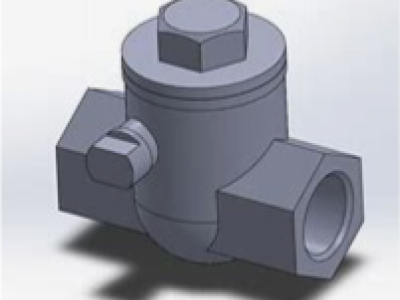Artificial Intelligence

Two publicly available datasets, the PASS and EmpaticaE4Stress databases, were utilised in this study. They were chosen because they both used the same Empatica E4 device, which allowed the acquisition of a variety of signals, including PPG and EDA. The dataset consists of in 1587 30-second PPG segments. Each segment has been filtered and normalized using a 0.9–5 Hz band-pass and min-max normalization scheme.
- Categories:
 33 Views
33 ViewsWe introduce a wireless potato root tuber sensing (WPS) dataset comprising multi-channel received signal strength(RSS) data from a wireless network and ground truth annotations for potato root tubers. We design a testbed called spin, which is based on a multi-channel wireless network, the wireless network is consist of 16 TI CC25231 nodes deploy on a white rack, using this testbed, we conduct extensive measurement expriments. We first perform expriments in a static environment.
- Categories:
 128 Views
128 Views
The AIS dataset is provided by the National Oceanic and Atmospheric Administration (NOAA), spanning from January 2020 to December 2020. The trajectories of 140 individual vessels (including tankers and cargo) were collected. Weather and ocean conditions for the same period are obtained from the National Data Buoy Center (NDBC), collected from 15 buoys.
- Categories:
 32 Views
32 Views
We have collected a variety of datasets that are frequently utilized in the research domain of HashRec. These datasets are essential for conducting comprehensive and insightful studies on hashing-based recommendation systems. For individuals interested in delving deeper into the specifics of these datasets, including their sources, structures, and usage instructions, please refer to the dedicated repository at https://github.com/Luo-Fangyuan/HashRec.
- Categories:
 16 Views
16 ViewsThis dataset comprises images of parts from real industrial scenarios and virtual reality environments. Real images are sourced from actual industrial settings, ensuring both authenticity and diversity, while virtual reality images, which make up approximately 11% of the dataset, are captured through precise 3D modeling. Approximately 30% of the part information was manually authored by industry experts, while the remaining 70% was generated by multimodal large models such as Wenxin Yiyan and GPT-4.
- Categories:
 138 Views
138 Views
Moving away from plain-text DNS communications,
users now have the option of using encrypted DNS protocols
for domain name resolutions. DNS-over-QUIC (DoQ) employs
QUIC—the latest transport protocol—for encrypted communi-
cations between users and their recursive DNS servers. QUIC is
also poised to become the foundation of our daily web browsing
experience by replacing TCP with HTTPP/3, the latest version
of the HTTP protocol.
Traditional TCP-based web browsing is vulnerable to website
- Categories:
 32 Views
32 Views
4800 + 2400 chipless RFID measurements of a population of 16 tags. Magnitude and phase are phase to allow DSP in the time domain. The measurement are made in a monostatic configuration with linearly-polarized antennas. The population of tags include circular ring resonators and square ring resonators. The dataset is used to trained convolutional neural networks. The inputs of the CNN is the continuous wavelet transform of the signals. The CWT is get from a previously selected portion of th signal in time domain.
- Categories:
 17 Views
17 Views
The CIFAR-10 dataset is a popular benchmark in computer vision, consisting of 60,000 32x32 color images across 10 classes, with 6,000 images per class. It is widely used for evaluating image classification models, particularly convolutional neural networks (CNNs), due to its manageable size and broad applicability. The CIFAR-100 dataset expands on CIFAR-10 by featuring 60,000 images across 100 classes, providing a more complex challenge with 600 images per class. It is often used to test models on multi-class classification tasks.
- Categories:
 46 Views
46 Views
Datasetsof Med-RISE:
The study incorporates three datasets, each serving a unique purpose in medical research and analysis:
Code for the Med-RISE framework (Appendix 1), which details the architecture of Med-RISE.
Med-RISE Local Dataset (Appendix 2): A sample subset from the Med-RISE database, which was specifically created for this study. It integrates biomedical articles, clinical resources, medical textbooks, and general medical knowledge, offering a diverse and comprehensive resource for exploring various medical disciplines.
- Categories:
 20 Views
20 Views

